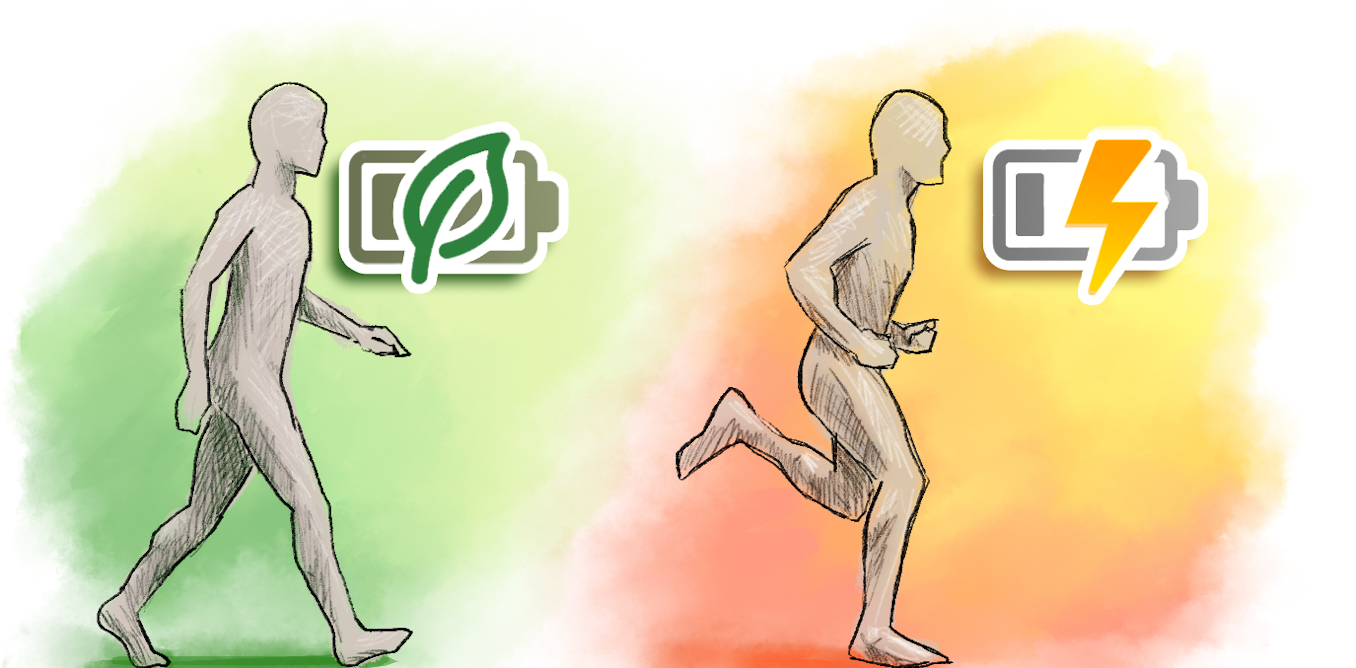I am really struggling to understand what this title is trying to say.
Yes, I agree that it’s a hodgepodge of linked concepts. Sorry! Here’s my attempt at explaining:
When you eat food, it’s like your battery gets filled. If, after eating a good meal you were to stand up and just stand there idly, your battery would slowly drain. Eventually, over the course of hours, you’d get hungry and need more of the food; you’d need to recharge your battery. Now, if your battery is full and you start walking, the battery will drain a little bit faster. You know this from taking walks, going on hikes, or commuting; they can make you hungrier! Now walk a little faster and the battery will drain even a little bit faster. If you take your sweet time on a walk, you will not nearly get as hungry compared to walking as quickly as you can.
Another useful image is holding a cup full of water and tilting it more and more, spilling the water; the more you tilt it, the faster the water gets drained from the cup.
Now, think about when you walk. When you walk faster and faster and faster, there is a point in which you automatically start running. Turns out, this point in which you go from walking to running is special because it leads to energy savings.
Weird, isn’t it? Here’s a way to look at it: if you try to walk a long distance at a very high speed, you’ll get exhausted, but if you run the same distance at that same speed, you’ll be less tired.
This is similar to some cars and bikes. If you’ve driven a gear-shift car or a bicycle with gears, you’ll understand that, past a certain speed, it’s much more efficient to switch gears. If you don’t switch gears, your motor will get exhausted or your legs will get exhausted. If you do, your car’s battery or your legs’ batteries will be able to push forward for longer.

